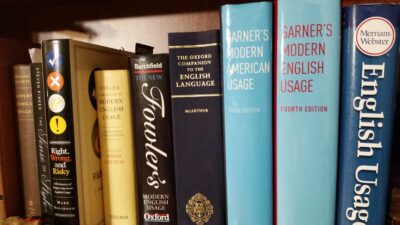Mnemonic devices can be a great way to remember something. Maybe you still remember that it’s “i before e except after c,” that ROY G BIV indicates the order of the colors of the rainbow, or that “every good boy deserves fudge” shows the order of the musical notes on the treble clef.
Sometimes, though, mnemonic devices don’t give you the whole story. They’re just a quick reminder of the complexities they represent. That’s fine if you know the whole story and the mnemonic device triggers that story in your mind. But if you’re taught only the device, how can you navigate complexities of a rule you’ve never been taught? And what if the mnemonic device is wrong?
FANBOYS is a mnemonic device to help students remember that the coordinating conjunctions are for, and, nor, but, or, yet, and so. It teaches that you should join two independent clauses with a comma and one of the FANBOYS.
Trouble is, neither of these things is true.
Brett Reynolds, an English professor at Humber College Institute of Technology and Advanced Learning, outlines the definition of a coordinating conjunction in “The Myth of FANBOYS: Coordination, Commas, and College Composition Classes” (PDF). According to Reynolds, coordinating conjunctions:
- Can’t occur next to each other: *Tom and nor Sara
- Can’t be modified by another word
- Join two equal parts (constituents) of all sizes: words, phrases, and clauses
- Link two equal constituents that can usually be put in reverse order (are commutative): Tom and Sara, Sara and Tom
As you can see from the table, only and, but, nor, and or meet all of the requirements for being a coordinating conjunction, while for, so, and yet meet only a few.
| Term | Can’t occur next to each other | Can’t be modified by another word | Joins all constituents | Constituents are commutative |
| and | ✓ | ✓ | ✓ | ✓ |
| but | ✓ | ✓ | ✓ | ✓ |
| for | ✓ | ✓ | Only to specific clause types | ✓ |
| nor | ✓ | ✓ | ✓ | ✓ |
| or | ✓ | ✓ | ✓ | ✓ |
| so | Can pair with and, but, or | Can be modified with just | Only to specific clause types | No |
| yet | Can pair with and, but, or | ✓ | Only to specific clause types | ✓ |
If for, so, and yet aren’t coordinating conjunctions, what are they when they join clauses, as in:
The Girl Scouts considered their sale a success, for they had sold every box of cookies.
Sara’s car is in the shop, so she will need a ride home.
The final is tomorrow, yet Tom can’t seem to focus on studying.
The Cambridge Grammar of the English Language notes that so and yet are more like conjunctive adverbs such as however. For is similar to the subordinating conjunction because semantically (similar in meaning) but not syntactically (grammatically).
In other words, even the linguists aren’t sure what for, so, and yet are in this situation.
What we do know is that for, so, and yet can join clauses the way and, but, nor, and or do. We also know that one way to join independent clauses is with a comma and one of the FANBOYS.
But where FANBOYS fails is by claiming that these words are a definite list of coordinating conjunctions and that the way to join two independent clauses is to use a comma and one of the FANBOYS. The story is more complex than that and more complex than I’ve laid out here.
For example, if you join independent clauses with one of the FANBOYS, you don’t always need a comma. If the two clauses are short and there’s no risk of the sentence being misread, you can skip that comma:
I read the book and I liked it.
There’s also more than one way to join independent clauses. You can use other words to join them, such as the ones Reynolds lists: plus, only, and then. You can use a semicolon followed by an adverb or a transitional phrase. Or you can just use a semicolon, colon, or dash:
Sara studied for the exam, only she studied the wrong chapter.
I locked the car before I left the parking lot; however, the car was gone when I came back.
Tom was soaked: the rain storm was a surprise and he didn’t have a jacket with him.
If you want to join two independent clauses with a comma and a word, FANBOYS offers several words that could work. But there’s more to the story than that, and a good writer knows what it is.
This article originally published on June 8, 2012, on Visual Thesaurus.



2 thoughts on “The Trouble with FANBOYS”